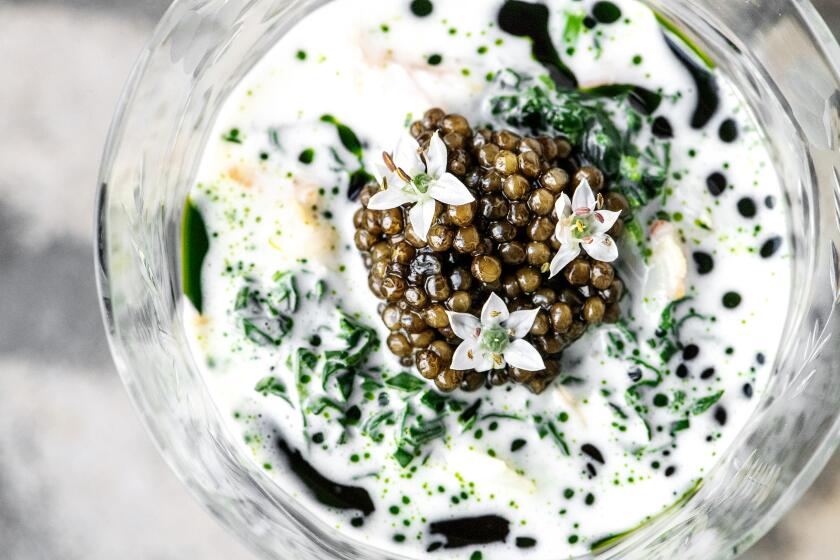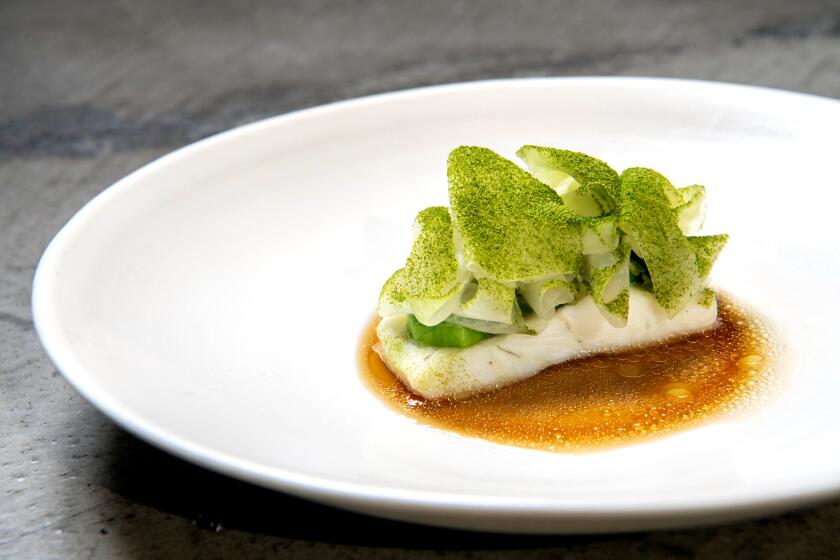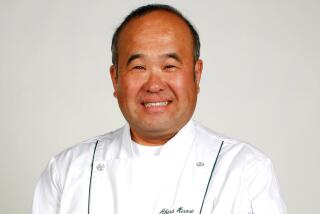- Share via
Jon Yao probably can thank his mom for his Michelin star. “I think Kato is a combination of Southern California, my upbringing in the San Gabriel Valley and my mom’s cooking,” the Taiwanese American chef says of his downtown restaurant.
That’s the intersection where Kato thrives. “Everything just feels very, very personal now in a good way,” he says.
- Share via
“My parents were super busy when I was growing up, but no matter how late, my mom made a point to cook a full meal,” he says. “In Mandarin, it’s called san cai yi tang, which is ‘three dishes one soup,’ and she always pretty much hit that. Watching how my parents were, I really want to make sure, No. 1, [that] people are nourished and satiated” and that people feel like the food was made with the same kind of intention.
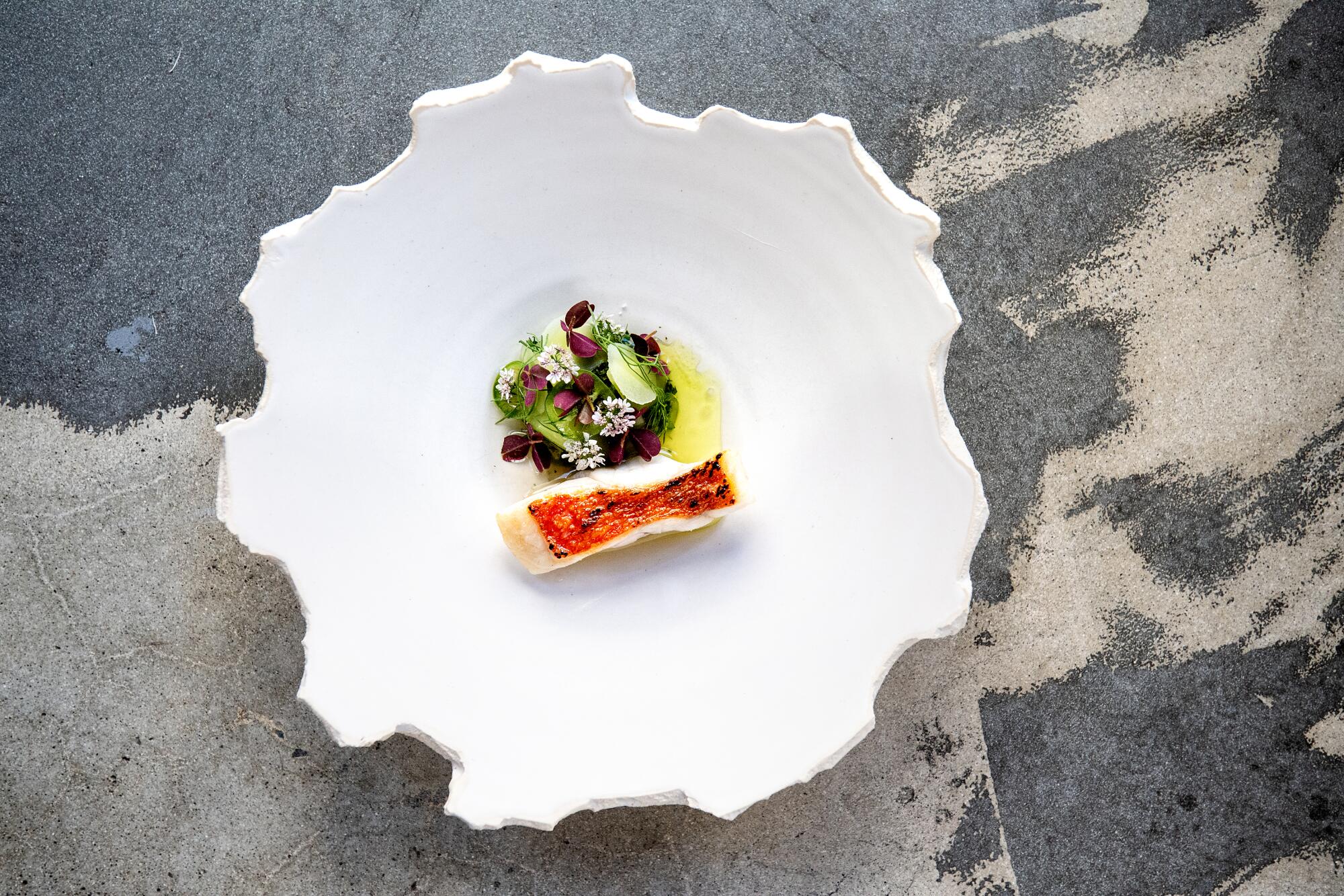
Yao, who cooked at restaurants such as Alma in L.A. and Benu in San Francisco, fell into opening and running his own restaurant in 2016 in West L.A., when his parents’ lunchbox venture didn’t take off and he took over the lease on a tiny, awkward mini-mall corner with no liquor license. He wasn’t yet 25.
He transformed the space into a smart destination with a menu that drew from his Taiwanese background, along with Japanese and other Asian influences. The classic Taiwanese san bei ji, or three-cup chicken, became three-cup abalone. Fried soft-shell crabs were wrapped in lettuce leaves like ssam, served with Vietnamese herbs, a version of Thai nam prik and cilantro blossoms.
“My parents always joke that I do floral arrangements too,” Yao says.
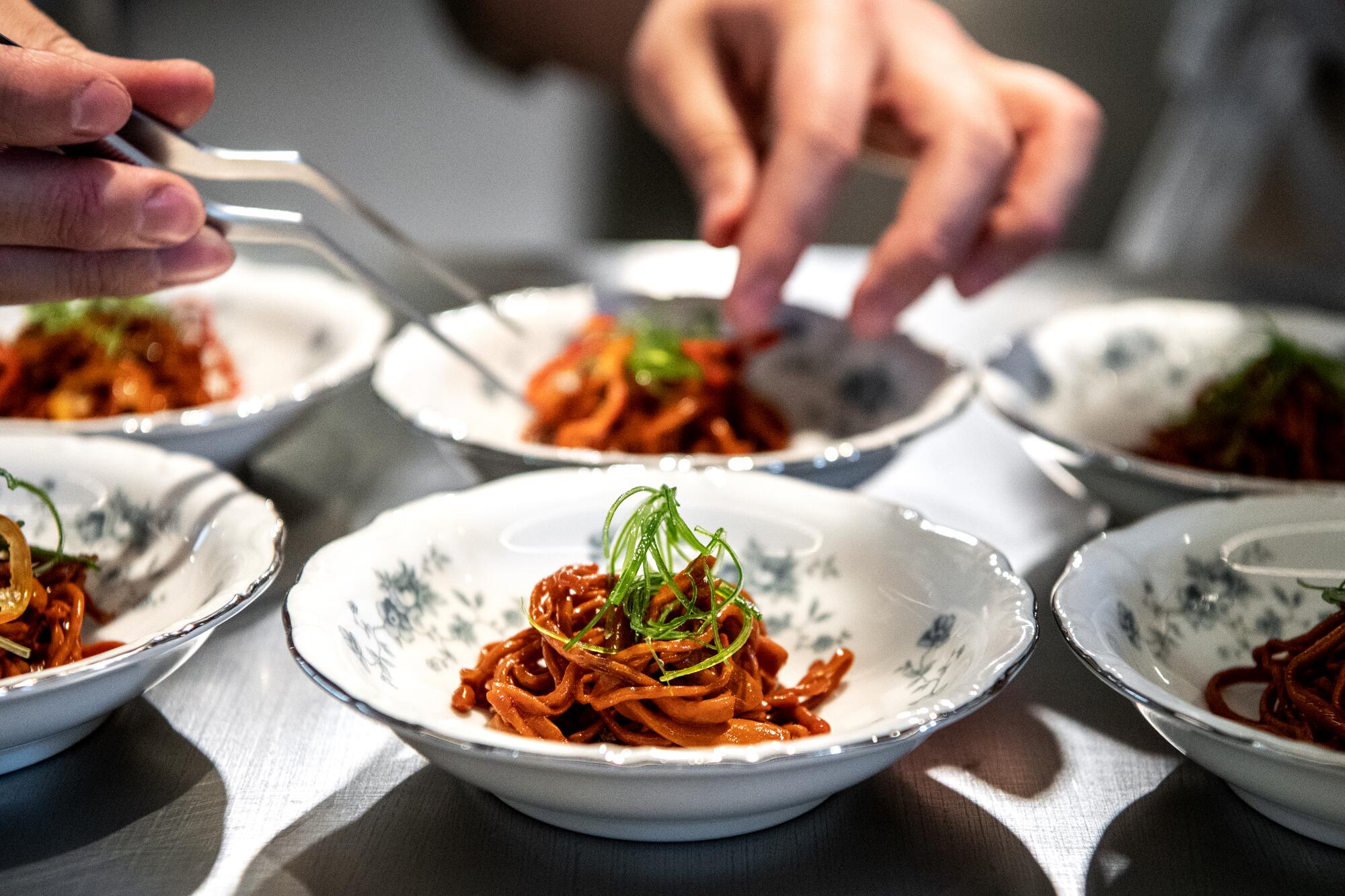
By the time he received a Michelin star in 2019, Yao already was on a new trajectory. And since he moved Kato to its bigger location at Row DTLA in the Arts District in 2022, Taiwanese cuisine has received only more and more international attention.
“A nascent yet powerful Taiwanese identity movement in the face of cross-strait political tensions has given shape to a redefined food culture that’s completely and unquestionably unique,” said Clarissa Wei, an expat from Los Angeles who lives just outside Taipei and who is the author of the new cookbook “Made in Taiwan.” .
But for Yao, the restaurant became a deeper, more intimate expression and exploration of his own heritage.
Kato was No. 1 on our last ranked list of the 101 best Los Angeles restaurants before COVID. Now it’s in a new high-design space at the Row DTLA.
“Everything [on the menu] has a story, and obviously, they’re stories from how I grew up,” he says. “Sometimes people have dishes with us, and they go to San Gabriel Valley and have the dish that ours was derived from, and they’re like, ‘Whoa, I remember having this.’ Or even if it encourages people to venture out of their comfort zone and try the hard-to-find mom-and-pop restaurant or somewhere where they can’t necessarily even read the menu correctly, that’s kind of the narrative we want to craft.”
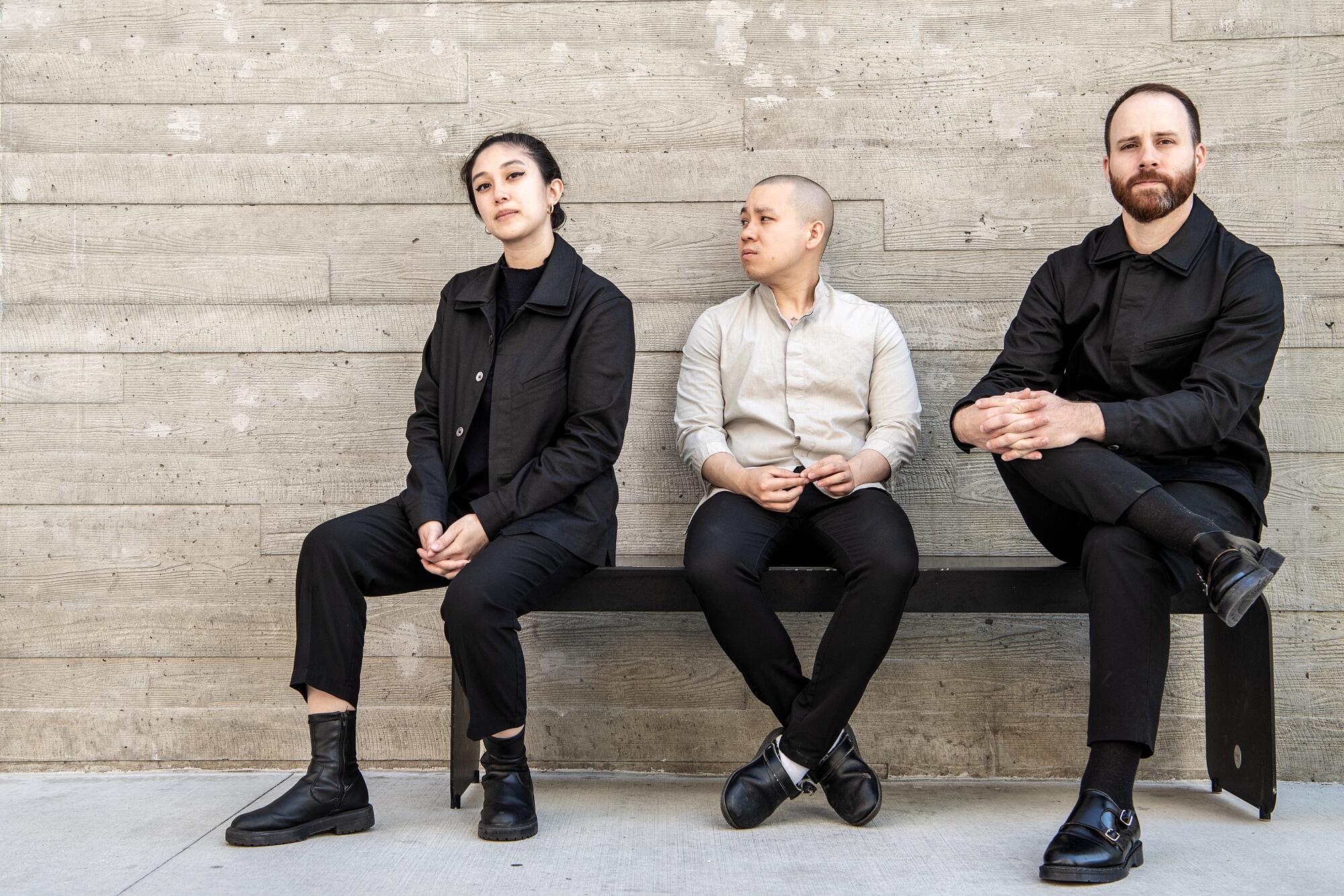
He says he still feels as if he has something to prove. “We’re doing fine dining to show that this type of Eastern cuisine and tradition can be on the same level as Western cultures,” he says. “I feel like Japanese restaurants and sushi restaurants get revered a certain way, but I want our food to be that way. You see it with Korean food now too, but not necessarily any sort of Chinese cuisine.”
That might be his motivation for earning another Michelin star, with ambitions for the Kato tasting menu, wine and cocktail program and service that are higher than ever, he says.
“I mean, it’s kind of weird to talk about it, but I would definitely like us to get two Michelin stars,” Yao says. “Yeah. I want us internally to value that style of service and style of dining. The way people obsess over the Western-type restaurants. Not to name names.”
Somehow it all comes back to Mom’s cooking. The whole steamed fish that was a fixture of dining at Kato is “the first dish at the restaurant that we really leaned into our heritage,” says Yao.
Recently, Yao stopped by the L.A. Times Kitchen to demonstrate how he steams a whole blackthroat sea perch, a white fish that’s known for its high fat content and fine texture, simultaneously silky and rich — perfect for steaming as well as grilling, he says.

“Last year, we served it raw, but we would fry the skin with Japanese charcoal directly on the skin because we don’t have any sort of method to stir-fry, so we’re always trying to impart that charred flavor into food. We have a wood-burning oven and a hearth, so we’re always running almond wood or Japanese charcoal. A lot of people will notice that the food at the restaurant now has a smoke flavor, and people don’t recognize that flavor with Chinese food.”
The steamed fish is inspired by his mom’s version. “I think my mom, low-key, wants to have her own restaurant one day. I still think she’s one of the best cooks I know.”
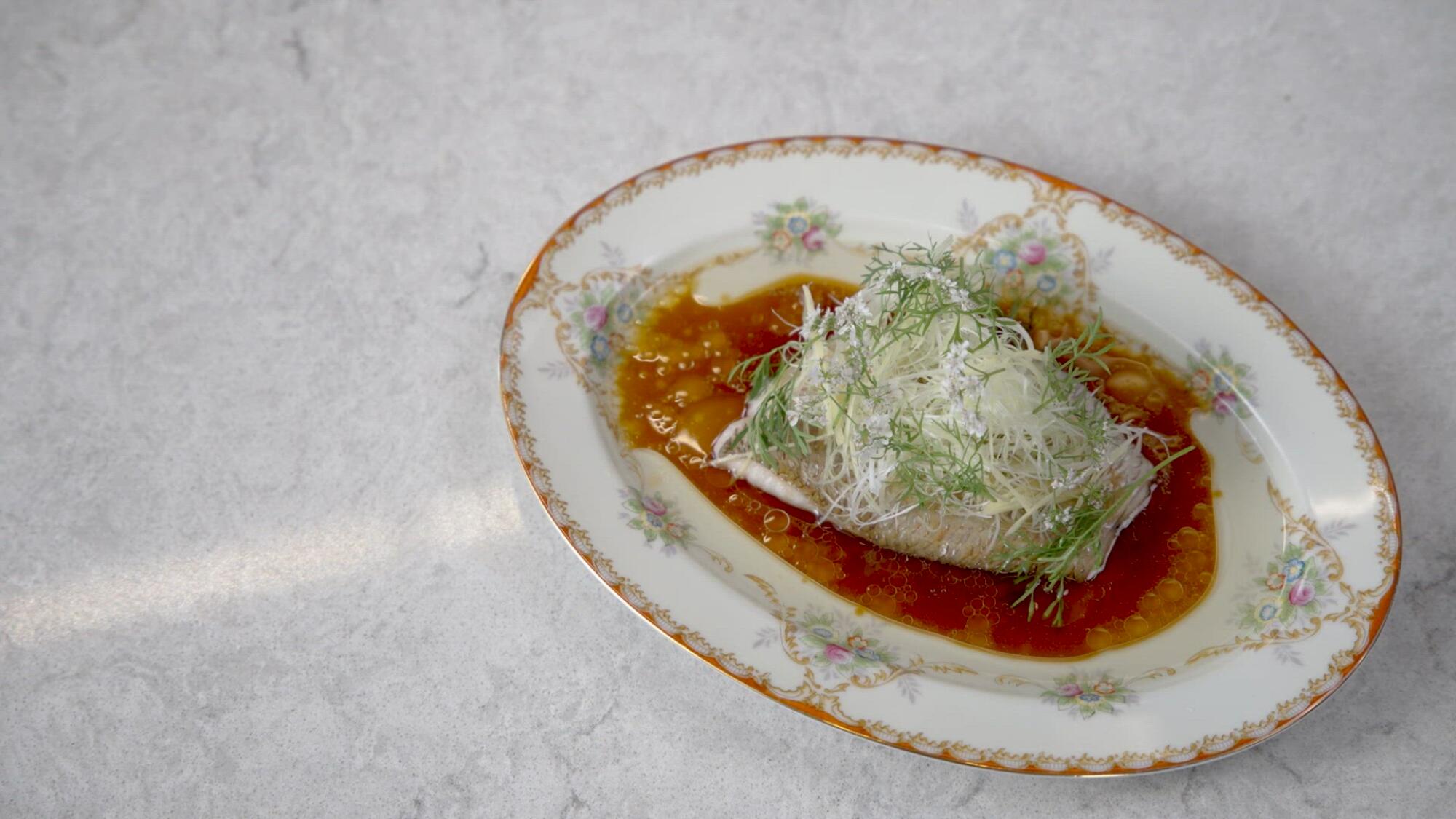
As he glides his knife across the collar of a whole blackthroat perch, which has been brined in saline solution and aged according to its size, he says, “This is basically $150 worth of this fish; we better eat this thing.” Then he slices off its tail.
As he cures the filets with salt, he prepares a loose interpretation of a relish he says is based on one that’s served with Cantonese barbecue. This one has Tokyo negi (“kind of like scallion, but it’s sweeter and larger”), very finely minced ginger so that it isn’t at all fibrous, sea salt and MSG, scalded with sizzling-hot grapeseed oil. It’s the kind of condiment you want to put on everything.
He steams the fish for about seven minutes, tops it with the relish, more Tokyo negi, julienned ginger, a fish tea made from fish bones and mixed with Taiwanese soy sauce that’s cooked over a live fire midway through its aging process and flavored with anise, then cilantro flowers and Delfino cilantro. It’s easy to see why it was a defining dish for Kato.
Where to try Kato
Food Bowl: Sample Kato specialties at Food Bowl’s Night Market, Paramount Studios backlot, 5555 Melrose Ave., Los Angeles, at 8 p.m. Sept. 23, lafoodbowl.com
Kato, Row DTLA, 777 S. Alameda St., Building 1, Suite 114, Los Angeles, katorestaurant.com
More to Read
Eat your way across L.A.
Get our weekly Tasting Notes newsletter for reviews, news and more.
You may occasionally receive promotional content from the Los Angeles Times.

